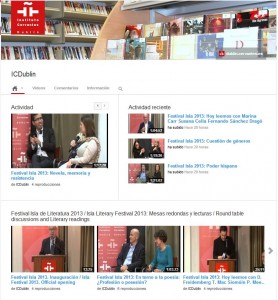Blog del Instituto Cervantes de Dublín
Torre Martello
El español, una lengua para la ciencia / Spanish, a language for science
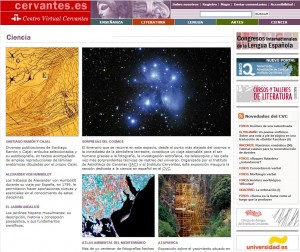 Hubo una vez un señor en León que tenía los ojos azules y la piel oscura, muy oscura, aunque no sabemos exactamente hasta que punto. Un señor que vivió hace aproximadamente 7000 años. Era un cazador recolector del mesolítico que no llegó a conocer la revolución agrícola que 3000 años antes había comenzado en el Próximo Oriente.
Hubo una vez un señor en León que tenía los ojos azules y la piel oscura, muy oscura, aunque no sabemos exactamente hasta que punto. Un señor que vivió hace aproximadamente 7000 años. Era un cazador recolector del mesolítico que no llegó a conocer la revolución agrícola que 3000 años antes había comenzado en el Próximo Oriente.
Los restos de este señor de León, con parientes en el norte de Europa (Suecia y Finlandia) y, antes aún, en Siberia, descansaban en una cueva en las montañas, a unos 1500 metros sobre el nivel del mar, hasta que fueron descubiertos en 2006.
El CSIC, (Consejo Superior de Investigaciones Científicas), la mayor institución pública dedicada a la investigación en España y la tercera de Europa, publicó la semana pasada los resultados del estudio de su genoma, el más antiguo de la Prehistoria recuperado.
Y es que España es, desde hace años, una fuente de información de incalculable valor para todos los que estudian los orígenes de la humanidad. Una investigación que abarca «las transformaciones físicas, mentales y sociales que hemos experimentado a lo largo del tiempo y que nos han hecho como somos».
Precisamente, no muy lejos de las montañas en las que fue localizado este señor de León, se encuentra la Sima de los Huesos de Atapuerca, donde un equipo de científicos investiga desde el año 1976 restos humanos de hasta 900000 años de antigüedad y donde se ha podido obtener ADN mitocondrial de hace 400000 años. Apasionante, ¿no te parece? Pues si quieres saber más, aquí hay algunos enlaces que te van a interesar. Eso sí, algunos de ellos solo tienen versión en español.
- Ciencia en el Centro Virtual Cervantes.
- Libros electrónicos gratuitos del CSIC.
- Página web CSIC.
- Fundación Atapuerca.
- Página web Atapuerca TV.
Once upon a time, there was a man with blue eyes and dark skin who lived in the mountains of León, in northwest Spain. This man lived about 7000 years ago. He was a Mesolithic hunter-gatherer who never knew the agricultural revolution that began 10000 years ago in the Middle East.
The remains of this man of León, with relatives in northern Europe (Sweden and Finland), and even in Siberia, were discovered in a cold cave, at 1500 metres above sea level, in 2006.
CSIC (Spanish National Research Council), the largest public institution dedicated to research in Spain and the third largest in Europe, published last week the results from an analysis of DNA taken from the wisdom tooth of this man.
Spain has been for years a source of invaluable information for all who study the origins of mankind. Research that covers “the physical, mental, and social transformations experienced by our ancestors through time and that have made us what we are today.”
Indeed, Atapuerca is not far from the mountains in which the blue-eyed man from León was located. In Atapuerca, a team of scientists investigates, since 1976, human remains up to 900,000 year old. In fact, in December 2013, researchers determined an almost complete mitochondrial genome sequence of 400,000-year-old representative of the genus Homo from Sima de los Huesos. Exciting , isn’t it ?
Well, if you want to know more, here you are some useful links. And yes, some of them are only in Spanish version.
Coloquio: Café-teatro científico en torno al cerebro | Discussion: Science café about the Brain
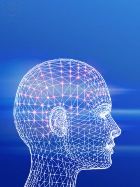 Coincidiendo con la Semana de la Ciencia 2012, el Instituto Cervantes te trae una charla divulgativa en formato de café-teatro, que puedes disfrutar hoy a las 18:00 horas en el Café Literario. No olvides hacer tu reserva en reservas.dublin@cervantes.es
Coincidiendo con la Semana de la Ciencia 2012, el Instituto Cervantes te trae una charla divulgativa en formato de café-teatro, que puedes disfrutar hoy a las 18:00 horas en el Café Literario. No olvides hacer tu reserva en reservas.dublin@cervantes.es
¿Qué provoca las ilusiones visuales? ¿Por qué sufrimos pérdida de memoria? ¿Qué función tienen las neuronas? Si sientes un gran interés por el funcionamiento de nuestra mente y te gustaría aprender cosas en un tono desenfadado pero riguroso, no dejes pasar la oportunidad y asiste a esta charla llevada a cabo por un científico (Casto Rivadulla) y un actor (Vicente de Souza).
Disfruta de una bebida gratuita mientras asistes a la actividad.
During Science Week 2012, Instituto Cervantes brings you an informal and informative talk. You can enjoy it today at 6pm at Cafe Literario. Don´t forget make your reservation in reservas.dublin@cervantes.es
What creates visual illusions? Why do we suffer from memory loss? What is the function of neurons? If you are interested on how our mind works and you would like to learn more about it in an informal but accurate fashion, don’t miss this opportunity and come along to this talk hosted by a scientist and an actor.
Have a free drink while enjoying our science café.
Dublin, Ciudad de la Ciencia | Dublin, City of Science
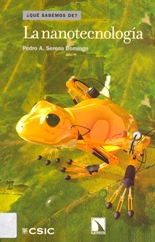 Este año, Dublín cuenta con el privilegio de haber sido nombrada Ciudad de la Ciencia. Por ese motivo, se han organizado numerosos eventos (más de 160) en los que se ofrecerán actividades para todos los gustos y públicos.
Este año, Dublín cuenta con el privilegio de haber sido nombrada Ciudad de la Ciencia. Por ese motivo, se han organizado numerosos eventos (más de 160) en los que se ofrecerán actividades para todos los gustos y públicos.
El objetivo es acercar de una manera accesible el no siempre tan insondable mundo científico, pero que con frecuencia es desconocido al gran público. Se busca despertar la curiosidad y abrir la mente a la ciencia. Así se combinará en los eventos lo mejor de la cultura irlandesa, las artes y las ciencias.
El completísimo programa cuenta con eventos organizados no solamente en Dublín sino en otras ciudades del país, acogerá exposiciones fotográficas y de arte, obras de teatro, festivales de cine, tours, búsqueda de tesoros, actuaciones callejeras, instalaciones interactivas a gran escala, experimentos, científicos de la calle, carnavales científicos, charlas, debates, talleres y por no faltar habrá hasta un desfile de moda.
La ciudad también albergará el mayor congreso científico del año, la ESOF 2012 (Euroscience Open Forum) del 11 al 15 de julio de 2012. Este evento reunirá a líderes en el campo científico y oficiales de políticas públicas que analizarán los grandes retos globales de nuestro tiempo, incluyendo energía, cambio climático, salud y alimentación.
Nuestra biblioteca se suma a esta iniciativa seleccionando para este mes de mayo su colección de libros científicos. Por ejemplo, en Princesas, abejas y matemáticas aprenderemos de una forma amena la relación de las matemáticas con la naturaleza y los procesos economizadores que permiten ahorrar recursos. En El lado oscuro del universo descubrimos cómo casi todo lo que hay en el universo es invisible. Nuestro planeta es tan solo una mínima parte de la materia y energía que ocupa el universo.
Y esto es solo un aperitivo para despertar vuestras mentes científicas, os esperamos con otros títulos igualmente apasionantes que os acercarán de una manera distinta a la ciencia y la naturaleza.
Dublin has been chosen City of Science in 2012. This celebration will consist of a programme of over 160 science-related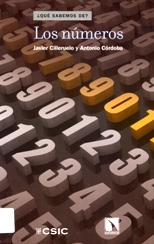 events that cross the worlds of art, culture and science.
events that cross the worlds of art, culture and science.
The main objective is to bring closer the non-always unfathomable scientific world to bigger audiences in order to awaken curiosity and open minds to science.
Therefore, these events are targeted at the general public and vary from a science themed picnic to an orchestral piece from the World Science Festival in New York. The programme, will include photographic and art exhibitions, several theatre pieces, film festivals, tours, trails and treasure hunts, street performances, science buskers, puppet performances, large-scale interactive installations, experiments, science carnivals and public talks, debates and workshops and even a fashion show.
The city will also host Europe´s largest science conference, ESOF 2012 (Euroscience Open Forum) from 11-15 July 2012. The event will bring together leading scientists and public policy officials to address all of the major global challenges of our time including Energy, Climate Change, Food and Health.
Our library will join this initiative by selecting a collection of scientific books for May. For example, we will learn in Princesas, abejas y matemáticas the relationship between maths and nature and the process to economize on resources. In El lado oscuro del universo, we find out how almost everything that exists in the universe is invisible. Our planet is only a minimum part of the matter and energy that are in the universe.
And this is just an appetizer to awaken your scientific minds, we hope to see you with other fascinating titles that will give you a different side of science and nature.



